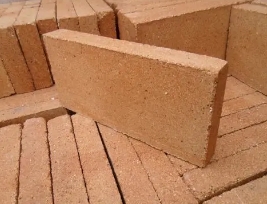- 30
- Nov
Classification of refractory materials for cement rotary kiln
класіфікацыя refractory materials for cement rotary kiln
1. The kiln mouth 0.6m is made of corundum wear-resistant castable;
The front kiln lining of cement rotary kiln is one of the weak links of many rotary kilns. In the production process of the rotary kiln, the operating cycle of the kiln lining strictly limits the service life of the entire kiln. In addition, the construction of kiln button and kiln lining is also more complicated. Casting construction generally uses corundum wear-resistant castable. Corundum wear-resistant castable not only has strong wear resistance and high fire resistance, but also has good chemical resistance and thermal shock resistance. More importantly, it is easier to construct with refractory castables. Such conditions can make the service life of the boiler easier to extend. Investigations show that the structural parts using corundum wear-resistant castable have an average service life of more than 8 months.
1 meter cooling zone,
The 5-meter differentiation zone uses silicon mullite bricks;
The 21.4-meter preheating zone adopts anti-falling high aluminum bricks;
The 25-meter firing zone adopts magnesia chrome brick;
The 20-meter transition zone adopts spinel bricks; the cooling zone and transition zone of the 0.8m section of the new dry-process cement kiln can choose silicon mullite bricks or HMS high wear-resistant bricks.
2. 1m steel fiber wear-resistant castable at the kiln mouth
Compared with the previous traditional rotary kiln, the temperature of the small kiln tail is generally lower than 1000°C, and can even reach about 700°C; the temperature of the large kiln tail is as high as 1100°C, and the kiln tail generally has no skinning phenomenon. For kilns with high alkali content or a small amount of high-sulfur coal in the raw meal, the components such as alkali, sulfur, and chlorine are repeatedly evaporated and accumulated, causing the components to form crust characteristic minerals, thereby forming crusts on the kiln material , Which has a great impact on production and operation at the bottom of the boiler. Through our continuous attempts, in recent years, the use of steel fiber wear-resistant castables or high-aluminum wear-resistant castables in rotary kilns will be well improved.

